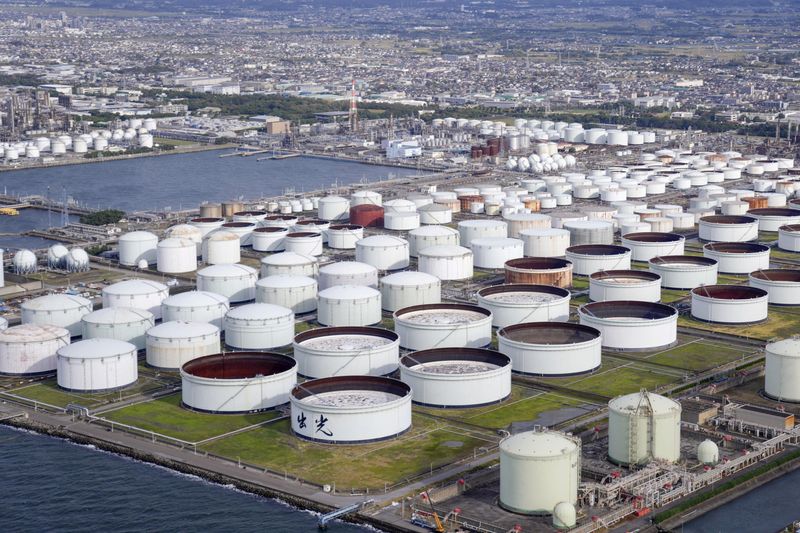Oil prices bounce back, helped by stronger OPEC outlook for China
2023.03.14 22:16

© Reuters. FILE PHOTO: An aerial view shows an oil factory of Idemitsu Kosan Co. in Ichihara, east of Tokyo, Japan November 12, 2021, in this photo taken by Kyodo. Picture taken on November 12, 2021. Mandatory credit Kyodo/via REUTERS/File Photo
By Yuka Obayashi
TOKYO (Reuters) – Oil prices rose in early Asia trade on Wednesday, recovering from the previous day’s plunge, as a stronger OPEC outlook on China’s demand helped offset bearish global investor sentiment in the wake of the recent U.S. bank failures.
futures climbed 62 cents, or 0.8%, to $78.07 a barrel by 0058 GMT. U.S. West Texas Intermediate crude futures (WTI) gained 70 cents, or 1.0%, to $72.03 a barrel. On Tuesday, the benchmarks fell more than 4% to a three-month low.
“The oil market has bounced back on its own after the recent sharp losses,” said Toshitaka Tazawa, an analyst at Fujitomi Securities Co Ltd, adding some investors had taken advantage of the slide to hunt for bargains.
“The OPEC upgrade in Chinese oil demand outlook also lent support, though investors were still concerned over a cascading financial crisis after the recent collapse of U.S. banks,” he said, noting that whether WTI can stay above $70 a barrel is being closely watched.
The Organization of the Petroleum Exporting Countries (OPEC on Tuesday further raised its forecast for Chinese oil demand growth in 2023 due to the relaxation of the country’s COVID-19 curbs, although it left the global demand total steady, citing potential downside risks for world growth.
The failure of Silicon Valley Bank and Signature Bank (NASDAQ:) triggered concerns about risks to other banks resulting from the U.S. Federal Reserve’s sharp interest rate hikes over the last year. That also spurred speculation about whether the central bank could slow the pace of its monetary tightening.
On Tuesday, the U.S. inflation data came in line with expectations, bolstering bets on a smaller interest rate hike by the Fed at its meeting next week.
Meanwhile, {{8849|U.S. crcrude oil inventories rose by about 1.2 million barrels in the week ended March 10, while fuel stockpiles fell, according to market sources citing American Petroleum Institute figures on Tuesday.
On the supply side, Saudi Arabia’s energy minister Prince Abdulaziz bin Salman told Energy Intelligence in an interview on Tuesday the OPEC+ alliance – OPEC and allied oil producers including Russia – will stick to production cuts agreed in October until the end of the year.








